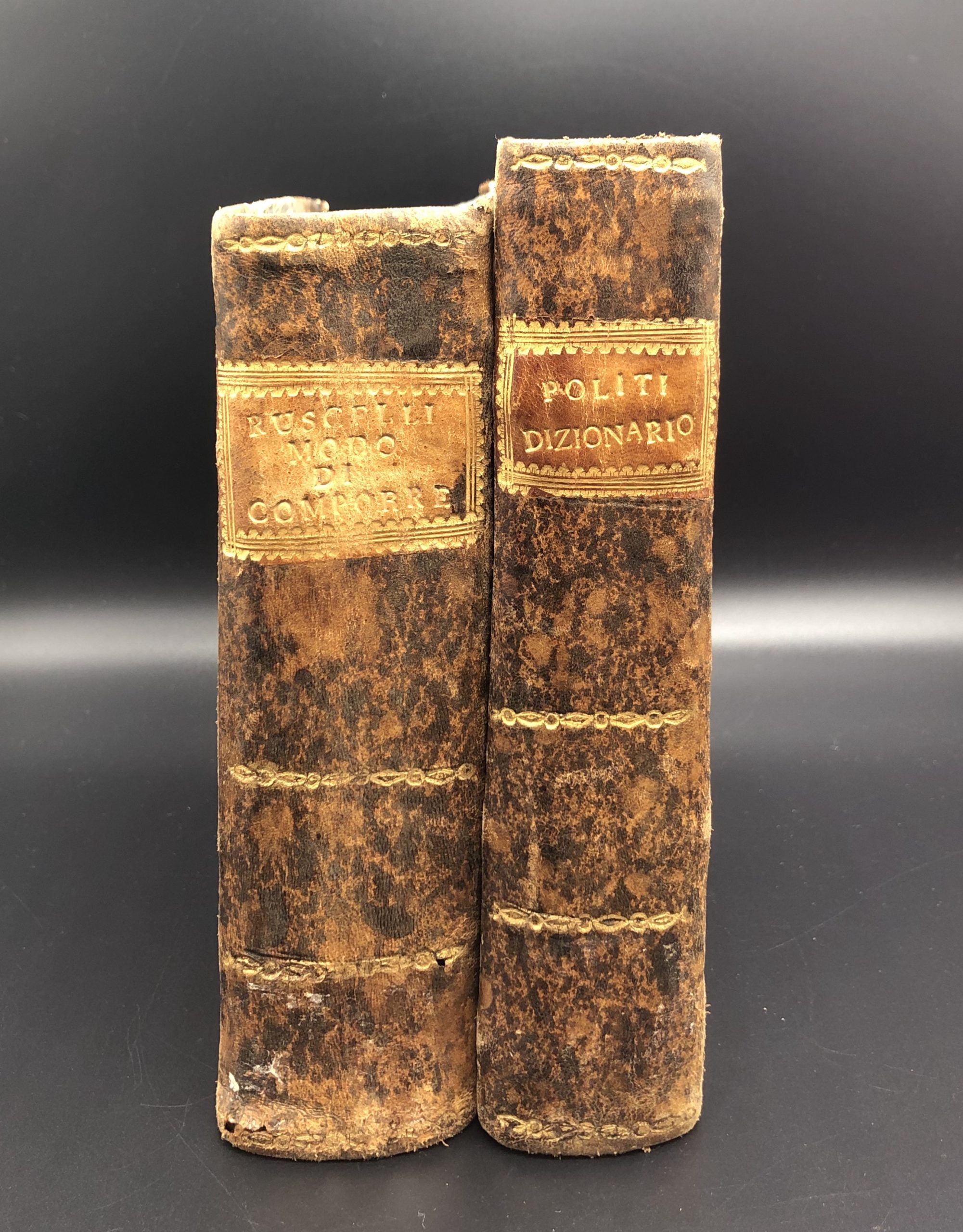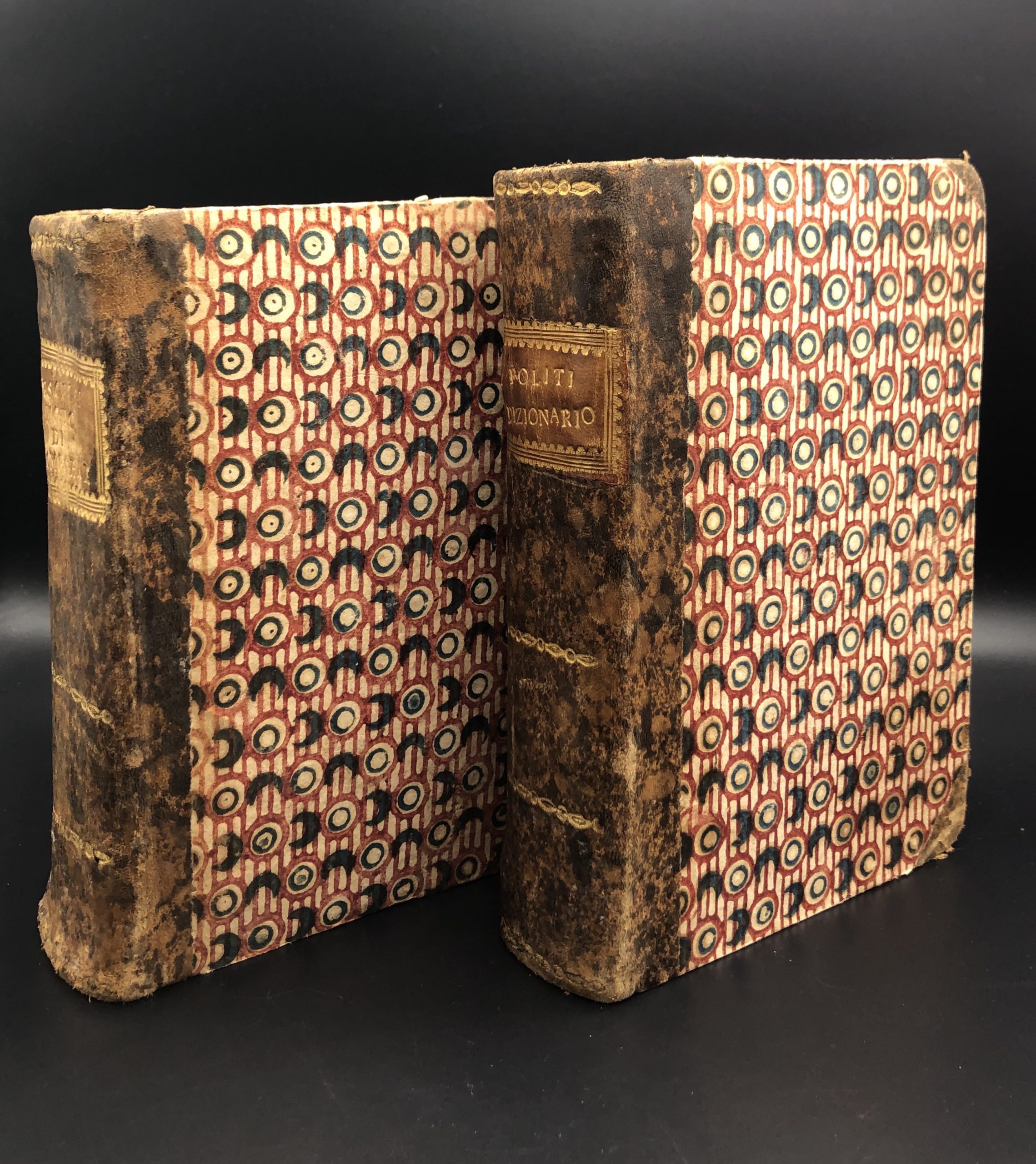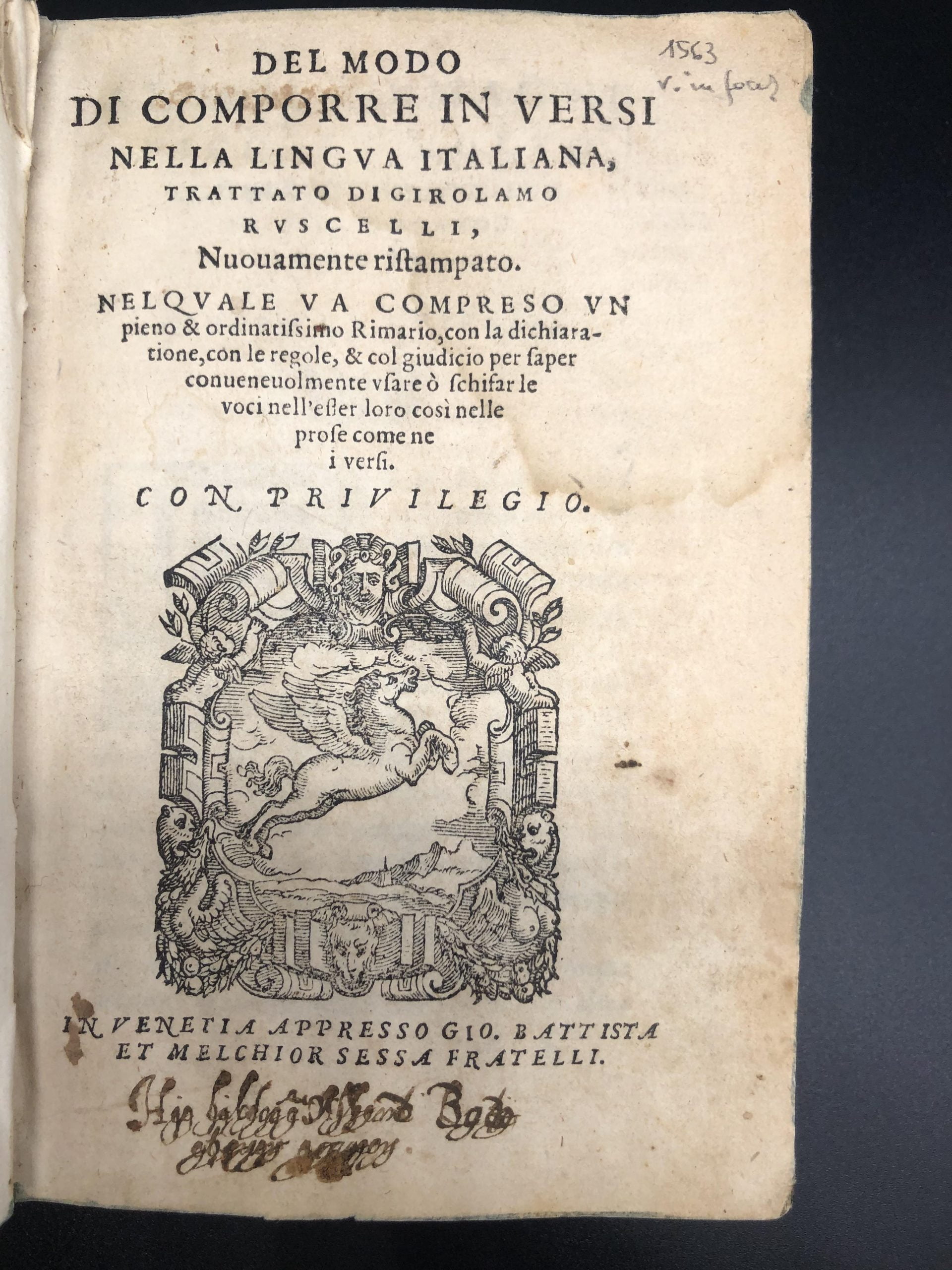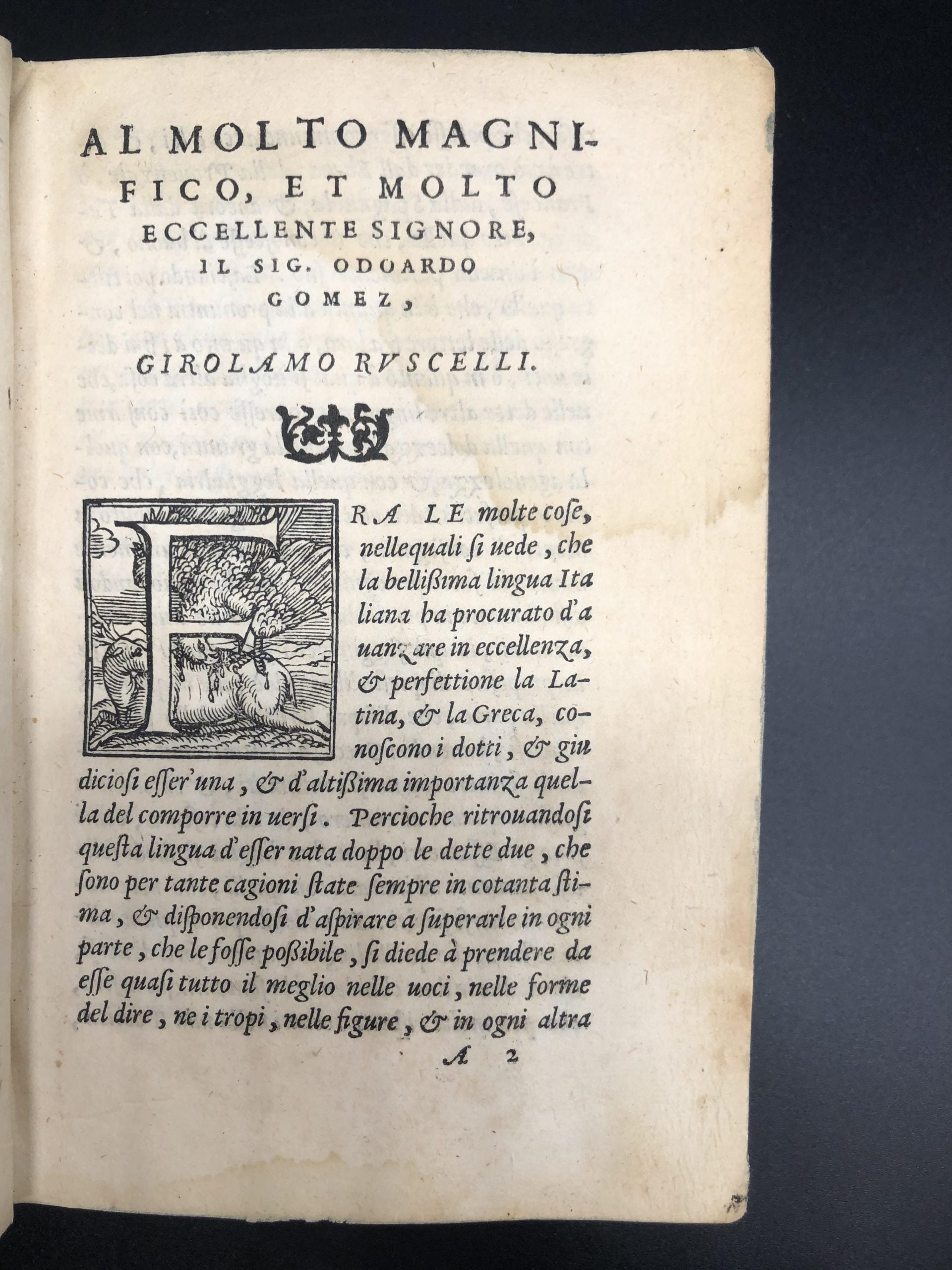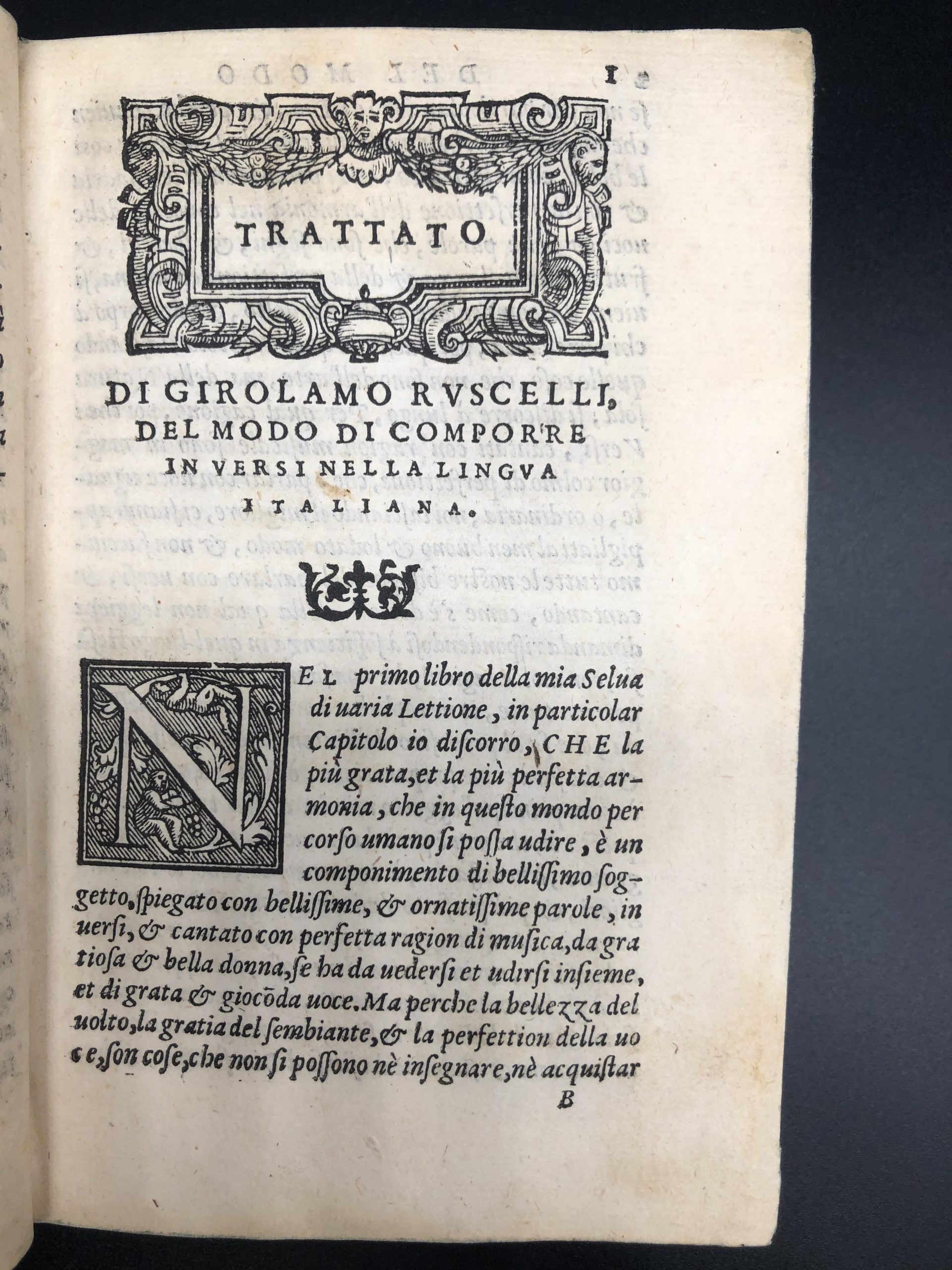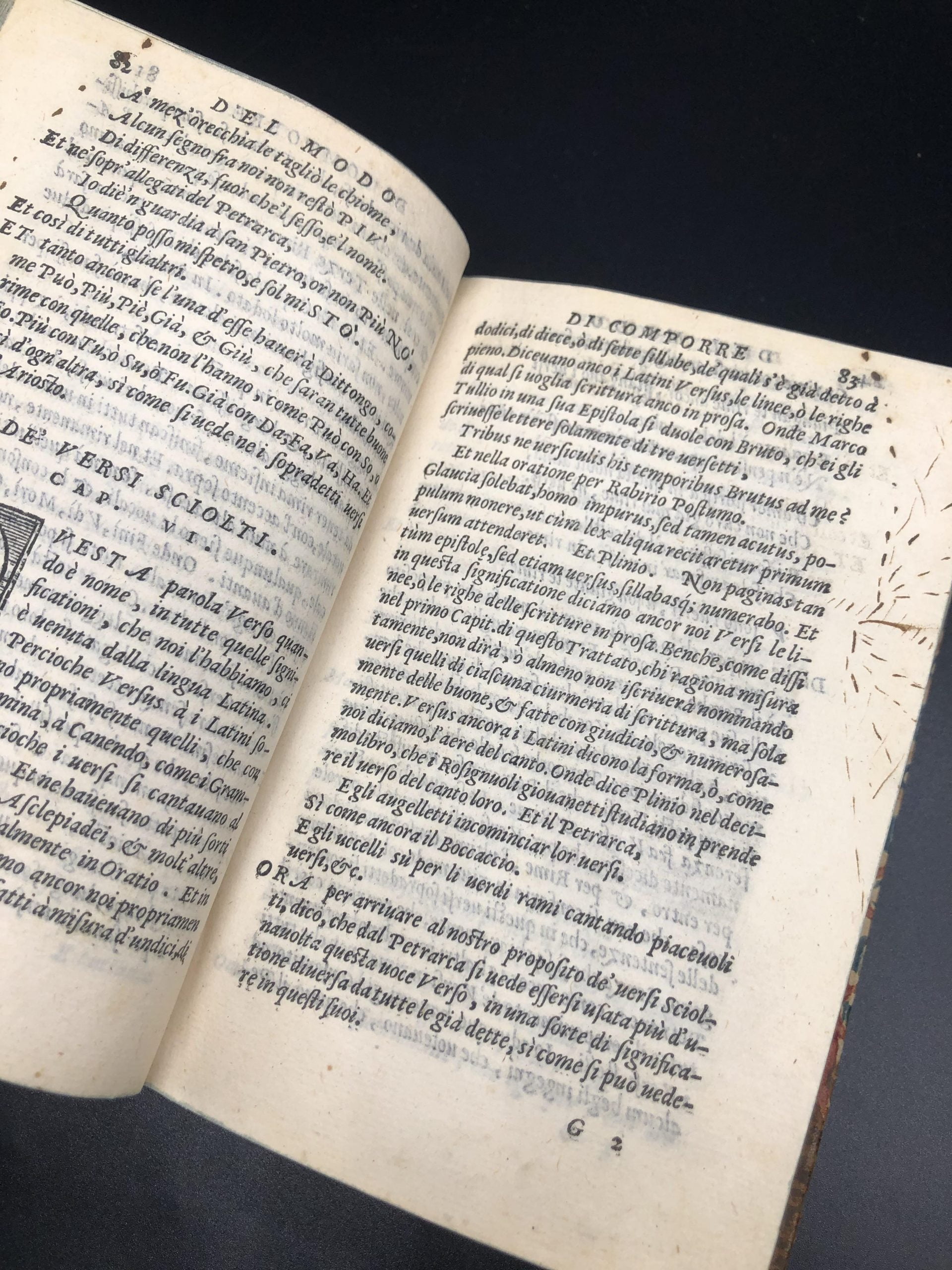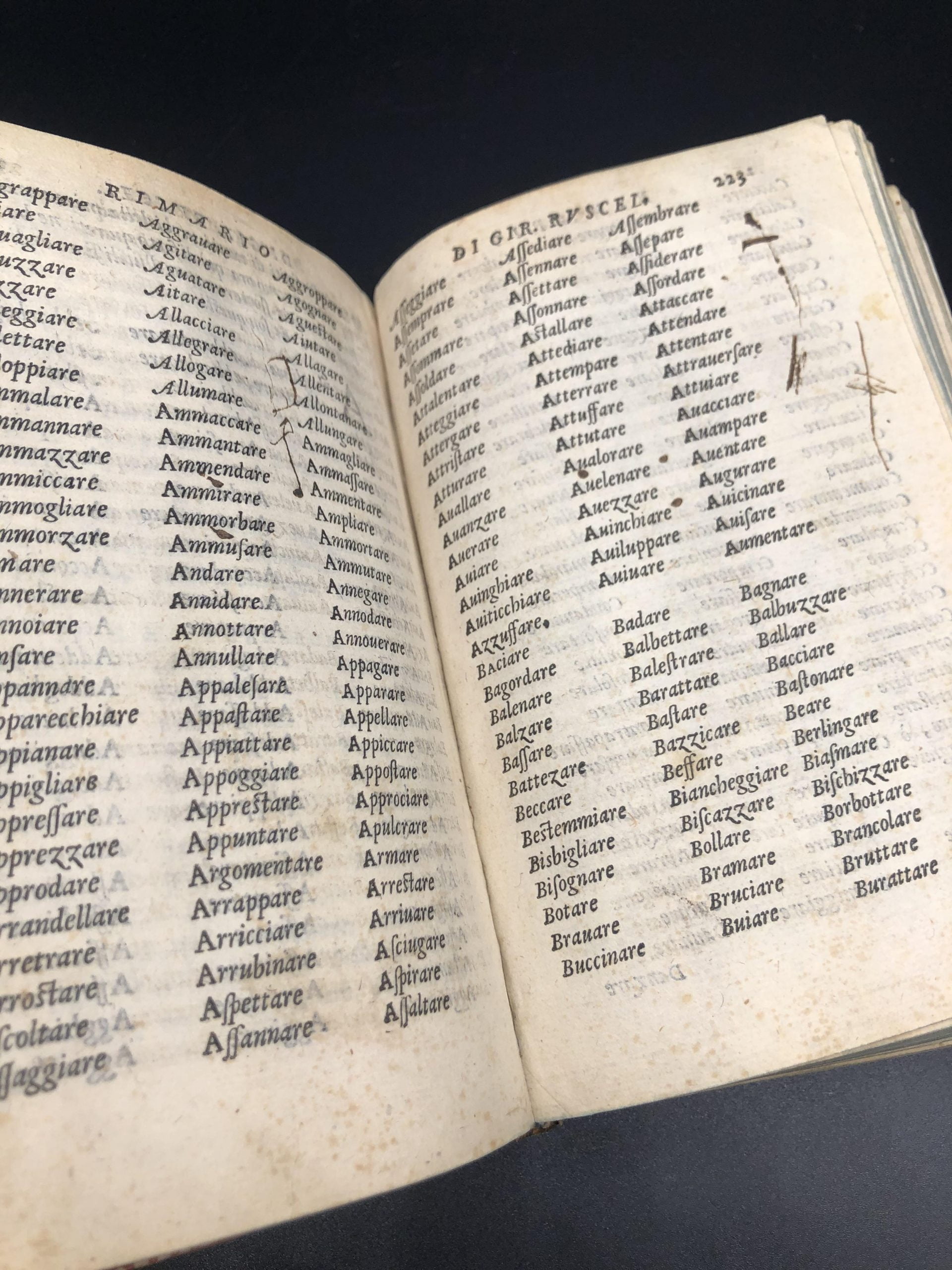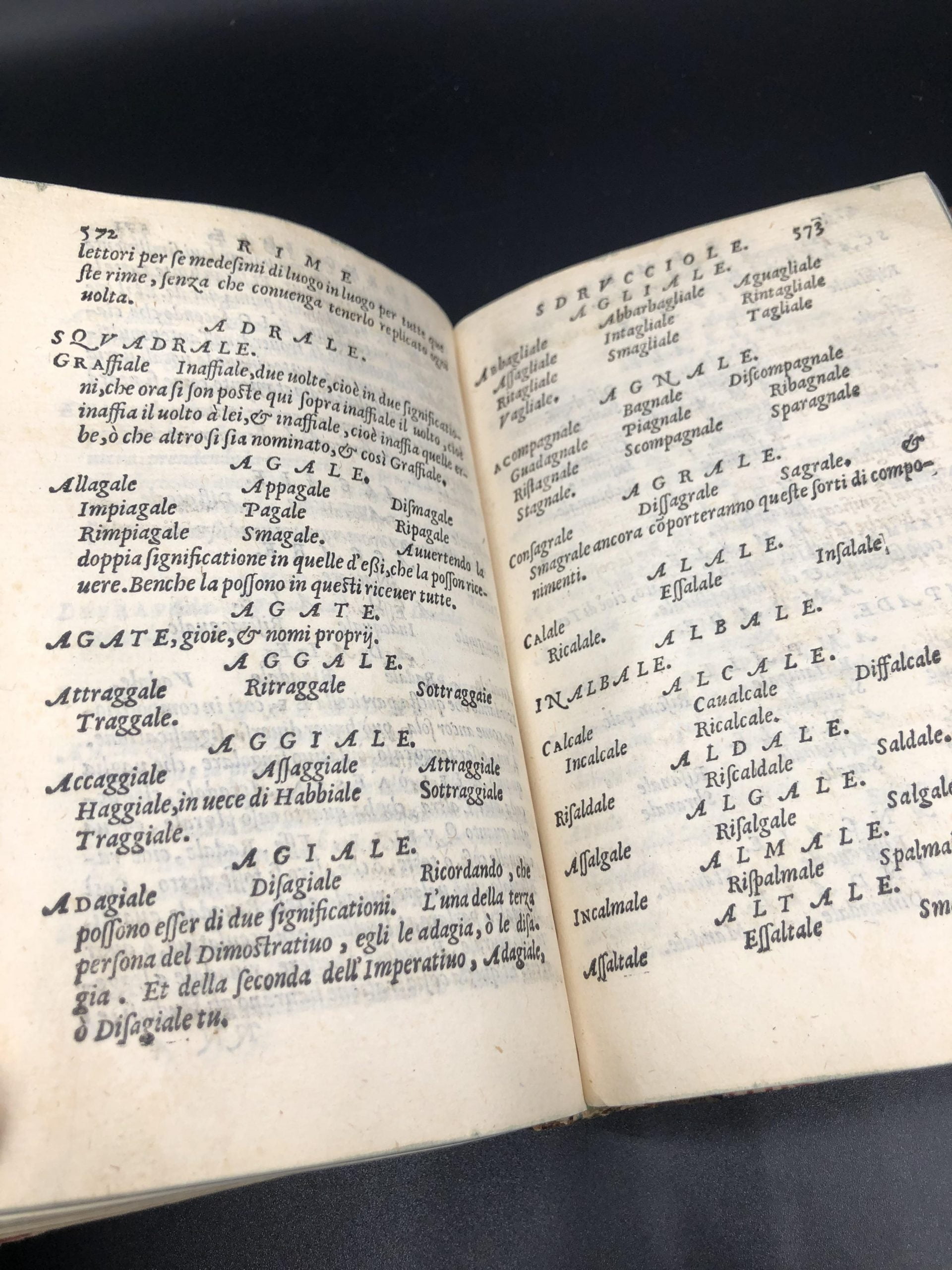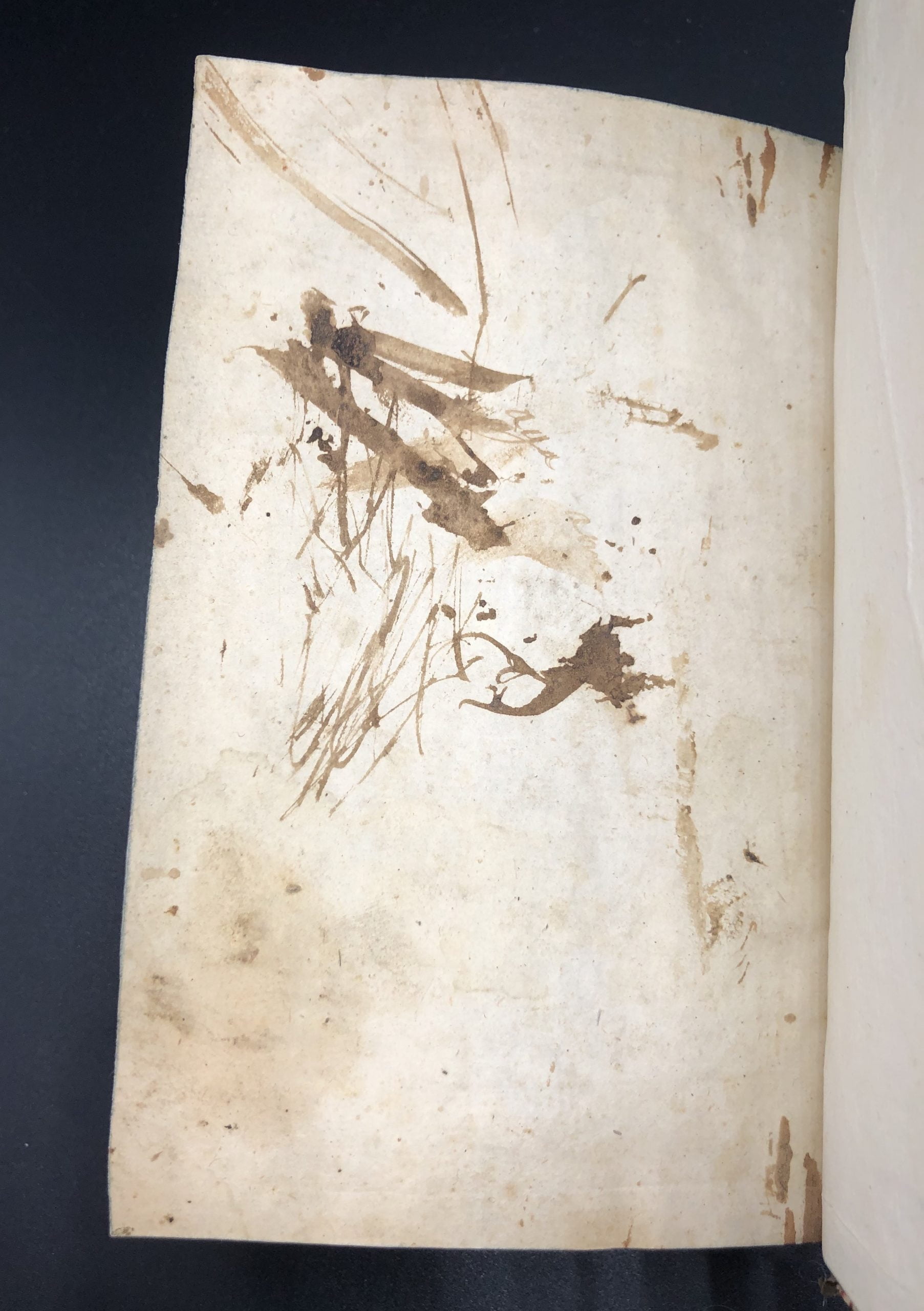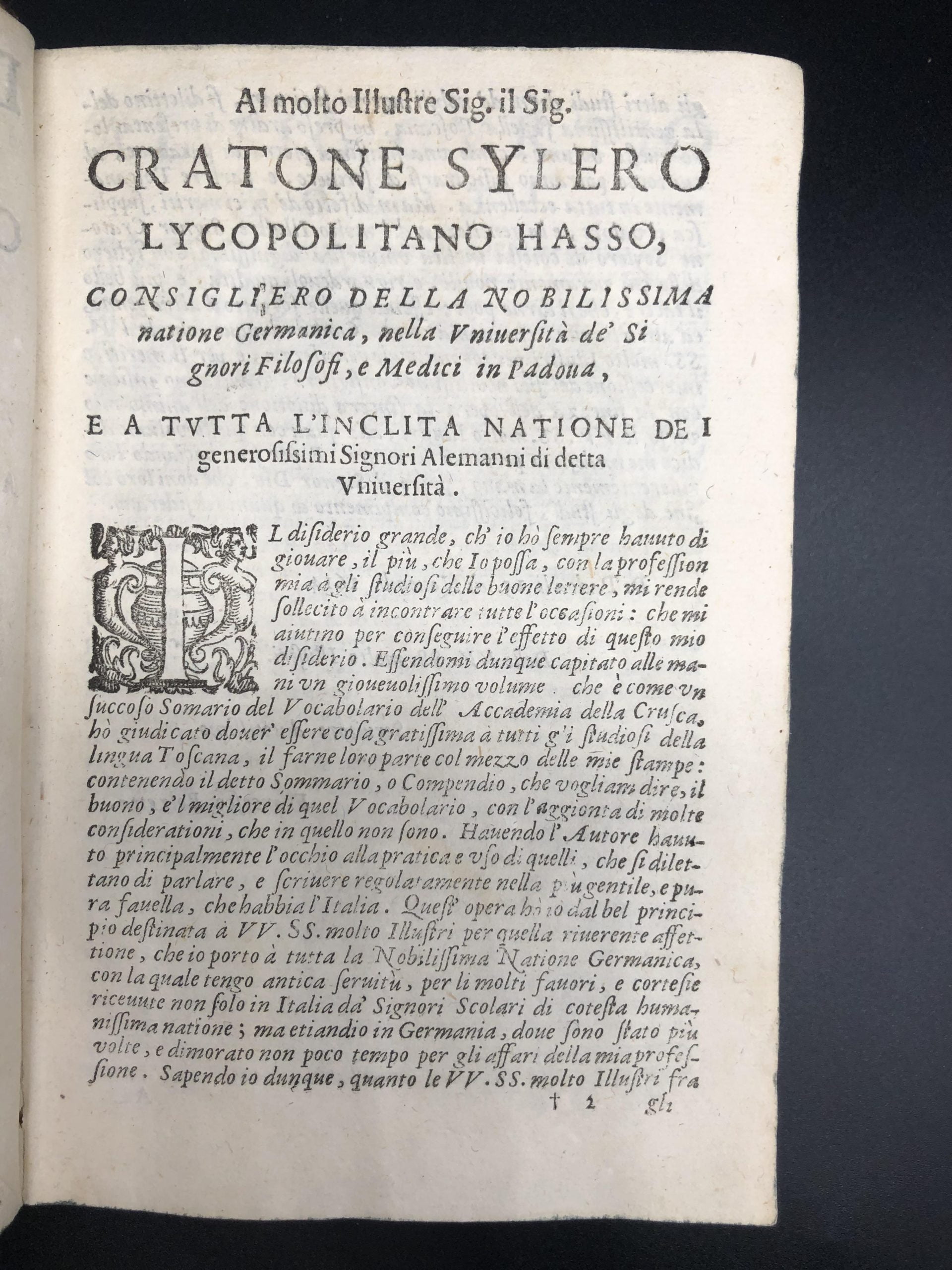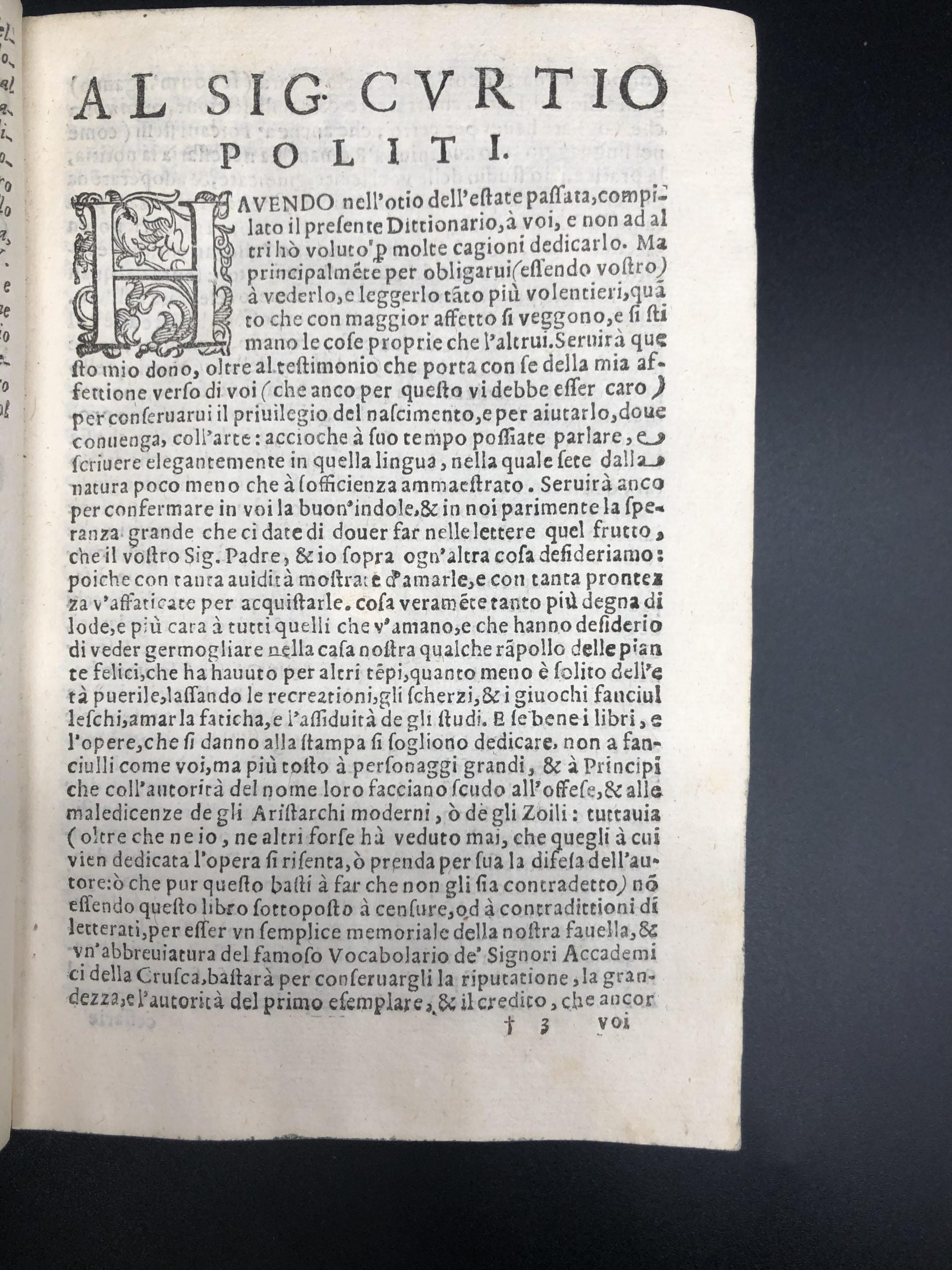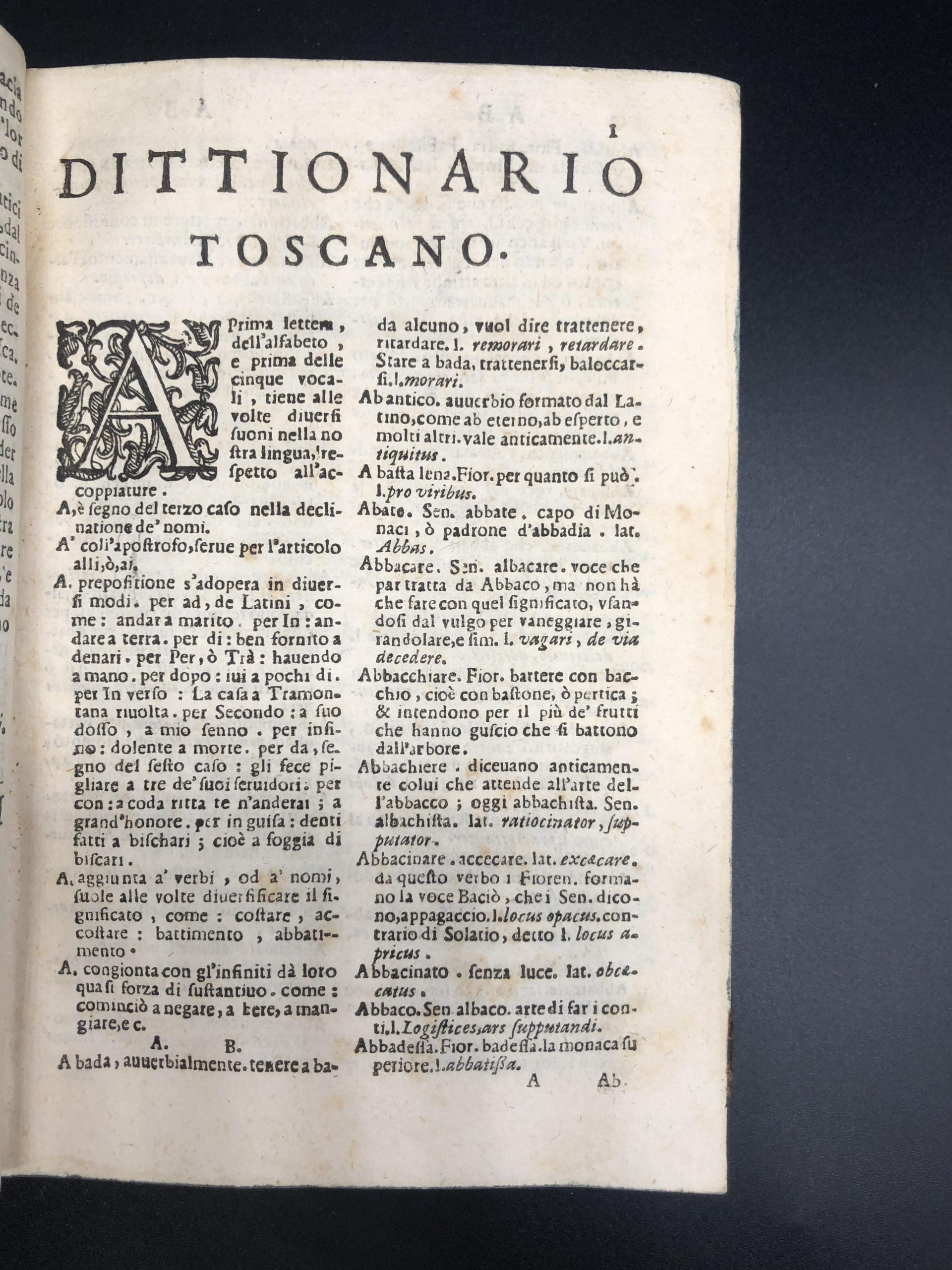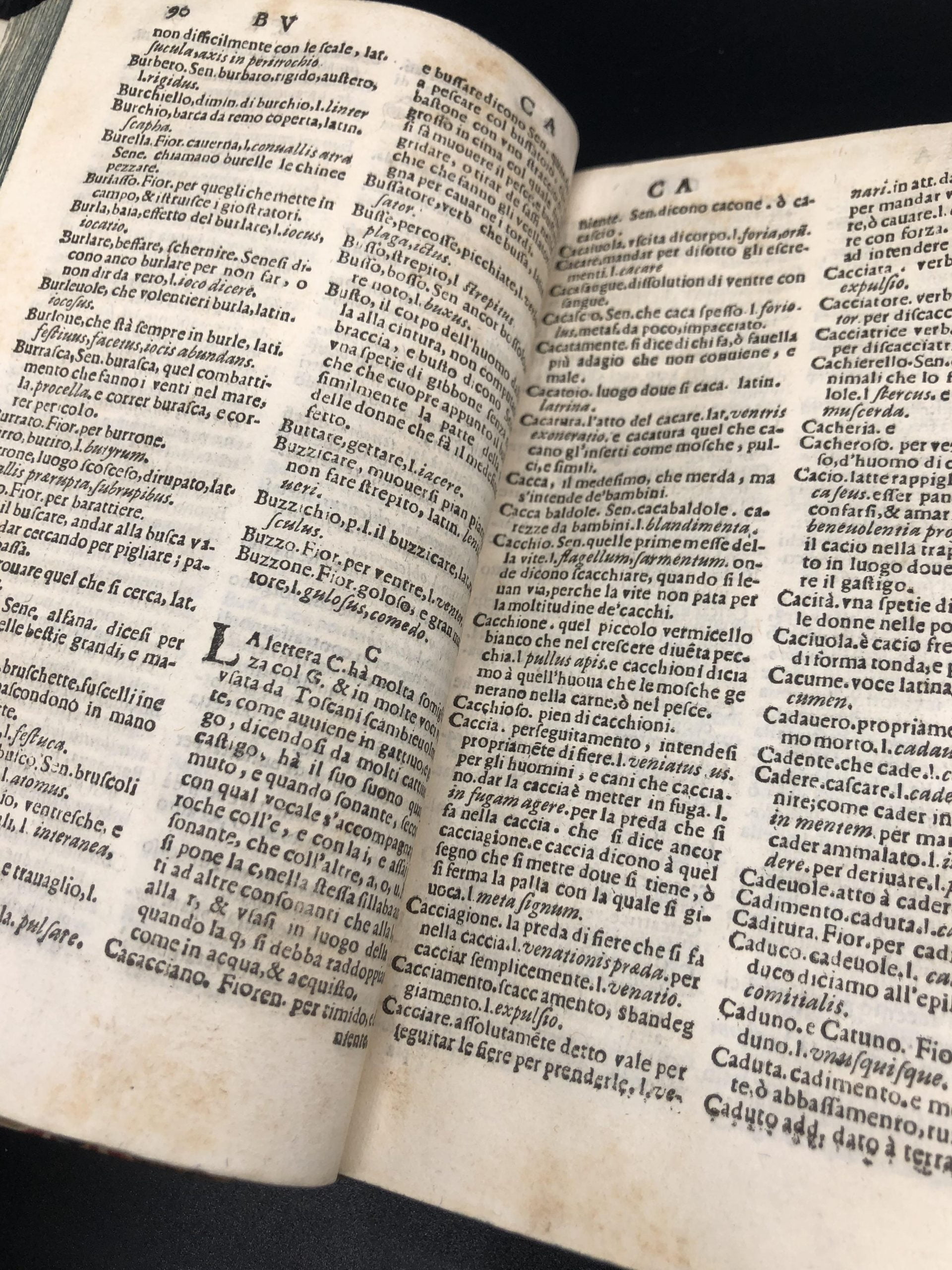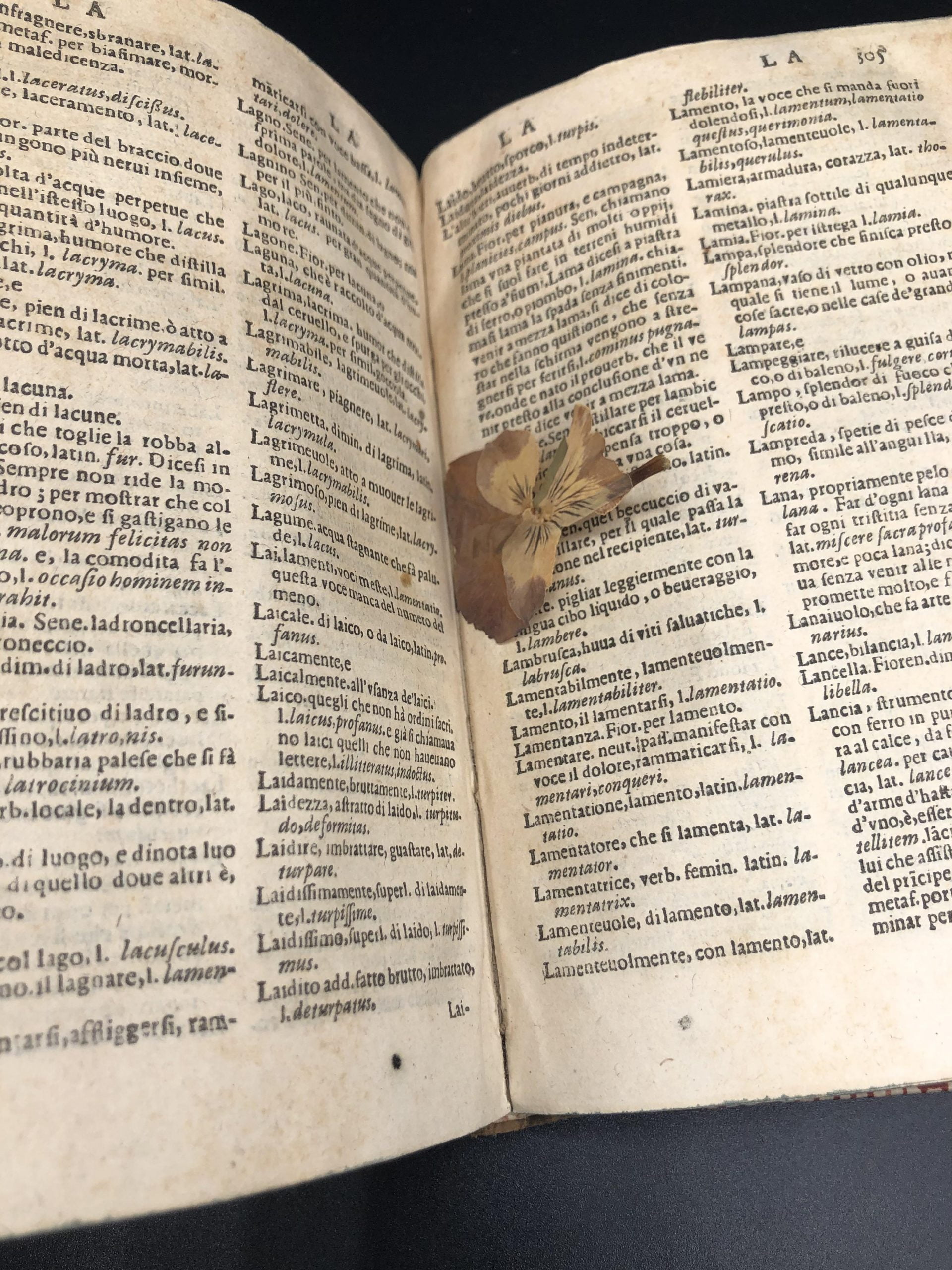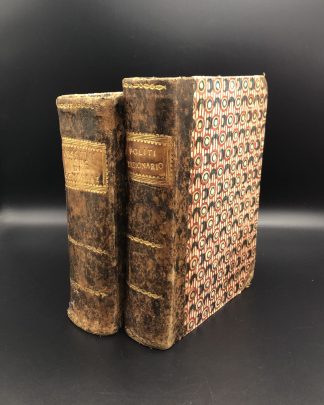RUSCELLI, Girolamo [with] POLITI, Adriano
DICTIONARY AND POETICS IN THE TUSCAN LANGUAGE
Del modo di comporre in verso nella lingua italiana...(2) Dittionario Toscano compendio del vocabolario della crusca
Venice, G.B. and Melchior Sessa, 1563; (2) G.Guerrigli and Francesco Bolzetta, 1615£1,850.00
2 vols. 8vo. I: pp. (xvi) 866 [i.e., 846] (ii), Italic letter, little Roman; II: pp. (xvi) 592 (xiv), lacking final blank, Roman letter, little Italic, double column. Woodcut printer’s device t-ps, decorated initials and ornaments. I: light water stain to outer margin of first few gatherings, occasional light browning or slight mainly marginal foxing, small paper flaw to lower outer blank corner of P8, scattered ink marks, extensive ink splash to 2X7-8 and blank verso of last. II: occasional slight mainly marginal spotting, a intermittent light browning. Good copies, uniformly bound as a set in C18 half mottled sheep over lovely dominoté paper boards, block-stamped in red and blue, spine gilt ruled, gilt-lettered morocco label, all edges blue, extremities a little worn, couple of tiny worm holes to foot of spine of vol. I. C16 ex-libris (crossed-out) to t-p of vol. I, occasional early underlining or marginal marks.
An unusual, charmingly bound two-volume set comprising a work on Italian poetics and an abridged Italian dictionary. The first is the third edition of Girolamo Ruscelli’s work, also called ‘Rimario’, a lexicon of vernacular verse composition. Ruscelli (1518-66) was a polygraph whose interests spanned mathematics, cryptography, cartography, rhetoric and literature. Originally published in 1558, ‘Del modo di comporre’ begins from the nature of the act of speaking, the syntactic and metric nuances of which are illustrated through synonyms. He proceeds to discuss the perfect poem, vernacular meters and their effect on the ear (e.g., versi tronchi and sdruccioli), the pronunciation of vowels, and—most interestingly—specific forms like the ottava and terza rima, ballate’, ‘canzoni’ and sonnets, with examples from the likes of Ariosto and Petrarch. The second part is devoted to a ‘Rimario’, a dictionary of words accompanied by suitable rhymes, and the third to a dictionary of all the words contained in this work, which might need explaining. The work is full of Ruscelli’s sophisticated and engagingly written comments on the language of his time—an important witness to C16 literary taste. The second work is the second edition of an abridgement, originally published in 1614, of a revised version of the ‘Vocabolario degli Accademici della Crusca’ (1612). Edited by the lexicographer Adriano Politi (1542-1625), it made the ‘Vocabolario’—the first dictionary of the Italian language, in its Tuscan form, ever produced—available and accessible to the wider audience. The Accademia della Crusca, founded in 1585, sought to promote linguistic purity based on the theories of Bembo, among others; their dictionary also included words from the spoken Florentine dialect, only if they had been used by important authors. Politi criticised the priority given to the literary language, preparing a compendium of words useful in everyday life. He added further lemmas and a short ‘Index of words in the Sienese dialect’, useful in the study of the Tuscan language. Two important volumes for the history of Italian linguistics.
I: BM STC It., p. 592; Fontanini I, 78 (1559 ed.). Not in Brunet or Cicognara. II: Only Newberry and HRC copies recorded in the US. BL STC It. C17 only lists later eds. Not in Brunet, Fontanini or Cicognara.In stock



